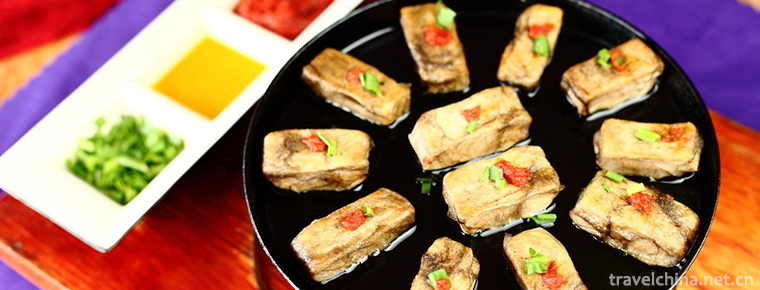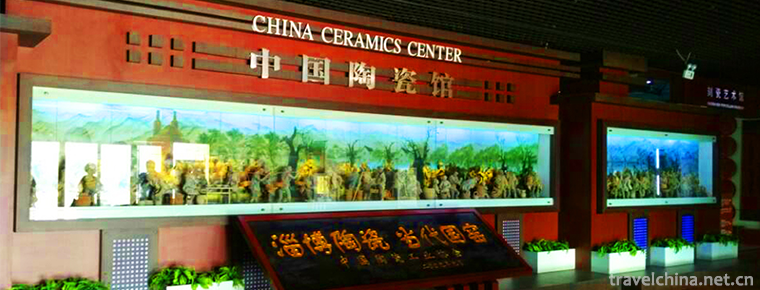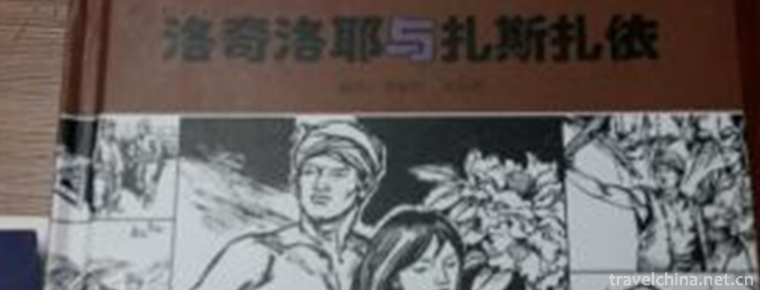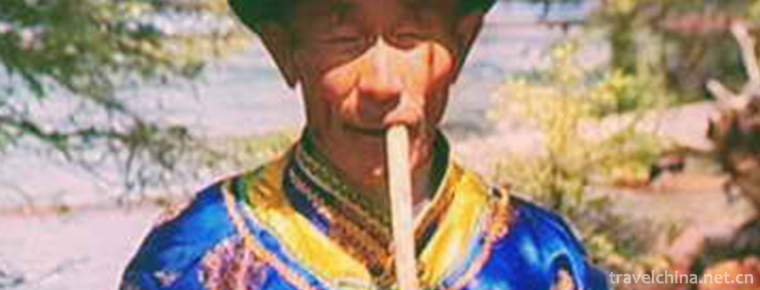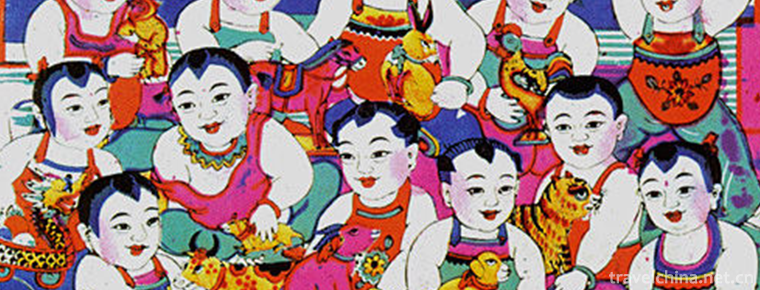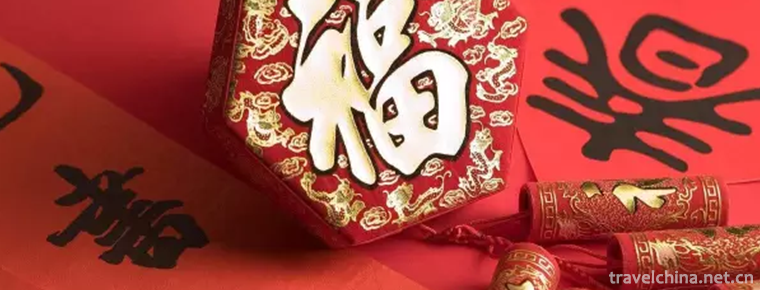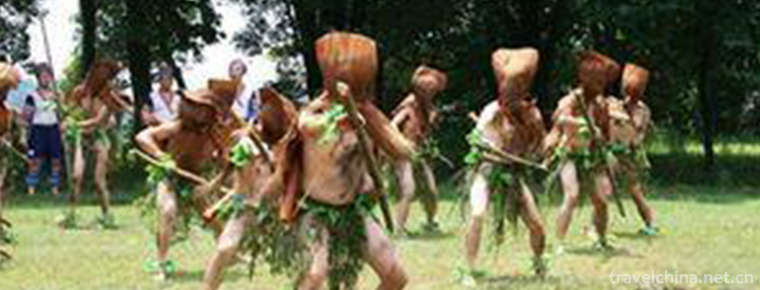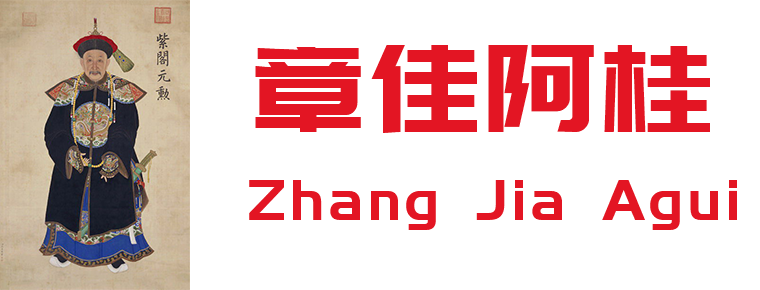Ancient town of Tangqi
Pictures From:Ancient town of Tangqi
Tangqi Town, located in the northern part of Hangzhou City, borders Deqing County of Huzhou City, is about 20 kilometers away from the city centre and 13 kilometers away from Linping, the seat of the district government. The famous Beijing-Hangzhou Grand Canal passes through the town, making it a key waterway for Su, Shanghai, Jia and Hu. Tangqi has been a water door-to-door gateway of Hangzhou since the dynasties.
Tangqi, located at the southern end of Hangzhou-Jiahu Plain, is an important town in northern Zhejiang and a famous water town in southern Jiangsu. It belongs to the deputy center of Linping, Hangzhou. Tangqi water and land transportation is very convenient. Zhejiang S13 Shenjiahu-Hangzhou Expressway passes through the town. Zhejiang S304 Provincial Road and Beijing-Hangzhou Canal run through the town from east to west. Tangkang Highway, Gongkang Road and Yuanyuan Road extend (S304 Provincial Highway G320 National Highway Connection Line) leads directly to Hangzhou, 15 kilometers away from the main urban area of Hangzhou, and water bus goes directly to Wulin Gate. It now covers 27 villages and 7 communities, with a population of nearly 100,000 and a total area of 79 square kilometers. It is well-known as "the land of fish and rice, the land of flowers and fruits, the house of silk and loquat".
Historical evolution
Tangqi has a long history. It was built in the Northern Song Dynasty. Since the Yuan Dynasty, businessmen gathered together and became a big town. During the Ming and Qing Dynasties, Tangqi was the first of the ten famous towns in the south of the Yangtze River. Tangqi, with a deep cultural accumulation, literati emerged in large numbers, and books were handed down; Tangqi, with many cultural relics, Guangji Changqiao, Guopu Gujing, Qianlong imperial monument, Qixi lecture monument, Taishi Dilang, Shuinan Temple... Quietly describe to people the style of that year; Tangqi, outstanding people, abundant production, loquat world-renowned, silk fragrance floating overseas, since ancient times is a tribute. Tangqi is an ancient town, but also a new city. Although after years of vicissitudes, she has lost the "36 Yao Bridge" and "72 half lanes", but her soul and roots are still there, and full of vitality and vitality. In the economic tide, she is still in the forefront of Yuhang District. It has won the honorary titles of Qianqiang Town, Civilized Town of Zhejiang Province, Top 100 Towns with Comprehensive Strength of Zhejiang Province, Top Ten Historic and Cultural Towns of Zhejiang Province, Health Town of Zhejiang Province, Top Ten Towns with Economic Development of Hangzhou City, Strong Town with Modernized Signature Education of Hangzhou City, Town with Protected Origin of Loquat, etc., and has become one of the pilot towns for cultivating small cities in Zhejiang Province by the end of 2010.
Traffic information
Take bus 432, 342, 350, 341, 319, 480, 487, 786, 771, 790, 792, 793, 799, 794 and 787 to get off at Tangqi Station.
geographical position
In the southeast of the town, there are super-mountain peaks, known as the "ten-mile plum blossom fragrant snow sea", which is one of the three major plum-exploring resorts in the south of the Yangtze River. It has formed a charming landscape with the rippling Dingshan Lake. In 2010, the town has 18 villages and 7 communities. The total area of the town is 79 square kilometers, with a total population of nearly 80,000 people. The town has 41 921 mu of arable land, 6290 mu of fish pond, 5870 mu of mulberry land, 10492 mu of fruit land, 5743 mu of mountain forest and 404 mu of tea land.
Historical evolution
According to the existing historical records, as early as before the Northern Song Dynasty, Tangqi was only a small fishing village, where fishermen scattered in twos and threes and rested in nets. It was not until Zhang Shicheng widened the Guantang Canal in the Yuan Dynasty that people lived along the canal that the town took shape. In the Hongzhi period of the Ming Dynasty, the construction of Guangji Bridge made the two sides of the town together, which gradually formed a market town with a certain scale. There is such a record in Guangxu's Tang Qizhi: "After Ruyuan, the river opened, the bridge built and the city gathered." You Yun: "Where the Tang Qiguandao is built, sails are woven and shuttled. Those who come from Hangzhou have never rested. Those who come from Jiaxiu have also lodged here. They converge on land and water, merchants gather in scales, and they are gathered on both sides of the river. Thus, it can be seen that the beautiful Beijing-Hangzhou ancient canal nurtured Tangqi.
Tang Qi was called Tang Qi in the old times, and has many nicknames. Most of these nicknames are scattered in the poems of calligraphy and painting inscriptions and chants left by literati and refined scholars. They share the names of Qishui, Qixi, Wudian and Wushui, among which Qishui and Qixi are the most common ones. There are always different opinions on the origin of Tangqi Town. The most accredited people live in the negative pond. This view began with Hu Xuan of the Ming Dynasty.
Jing Ji's The Story of Habitat and Local Conditions. Hu Xuan Jingyun: At the beginning of the country, the canal was opened and the banks of the ponds were built. Residents gathered at the beginning and lived in the negative ponds. They were named Tangqi. This statement is credible and widely accepted by many researchers and scholars.
But in addition, there are still three points about the origin of town names. First, the "temple" said that the name of Tang Qizhi written by Wang Tong of Qing Dynasty was Tang Qi Temple, which was the earliest one. In the Song Dynasty, there was Tang Qi Temple in the west of Xiatang, so it was named Tang Qi Temple. The name of Houzhen became obvious while that of the temple declined, so the people who lived here knew Tangqi Town and Tangqi Temple.
One is "hermit" theory, "Zhuo's family ride" Tang Qikao said: "Tang Qi people, Tang hermits also live." The hermit named Tang Ming Juan was born at the end of Song Dynasty and the beginning of Yuan Dynasty. He lived near the Six Mausoleums of the Song Dynasty in Shaoxing, and because he hated the crime of Yang Lianzhenjia, a monk of the Yuan Dynasty, stealing the Six Mausoleums and abandoning the Emperor's remains, he invited the local heroes to move the six emperors'bones near Lanting at night. Later, in order to avoid their misfortunes, he was trapped anonymously in the three villages inhabited by Tang, where people respected his righte
Another is "orientation". In Textual Research on the Evolution of Tang Qi in Ancient and Modern Times, Zhang Zhinai said that Tang Qi was located in the west of Guan Tang Dynasty. Therefore, Fan Yuhu of Song Dynasty had recorded Tang Xishi's poems, and Su Shi's poems "Ming Dynasty returned to the west of Tang Dynasty, where Ying's crows and flowers did not fall" could be testified.
Tangqi Town was the first of the ten famous towns in the south of the Yangtze River in the Ming and Qing Dynasties. Tangqi was originally under the jurisdiction of Renhe County. Hangzhou County was founded after the Republic of China. Tangqi was under the jurisdiction of Hangzhou County. Before liberation, Tangqi divided Shuinan and Shuibei townships, Shuinan was under the jurisdiction of Hangzhou County, Shuibei was under the jurisdiction of Deqing County, and the two counties were governed by rivers. In May 1950, the three villages of Shuangxi Township in Chengguan District of Deqing County, namely Yuanshuibei Town, were subordinated to Tangqi Town, ending the separation of the two sides. In 1958, the system of Hangzhou County was abolished. Tangqi belongs to the suburbs of Hangzhou and is called Tangqi Management Zone of Tangqi People's Commune in Hangzhou. In March 1959, he was affiliated with Banshan Associated Press. The following year, Banshan and Gongshu Associations merged into Qiantang Associations, and Tangqi belonged to Qiantang Associations. In April 1961, Qiantang Associated Press and Lao Yuhang County jointly built Yuhang County, Tangqi is under Yuhang County. Today, with the change of county system, it belongs to Yuhang District of Hangzhou City. In November 1985, due to the disassembly of villages and towns in the county, the former Dinghe Township was merged into Tangqi, and in 1992 the former Tangnan, Hongbian and Chaoshan Townships were merged into Tangqi together. As a result, the region and population increased rapidly, making it the second largest town in Yuhang District.
Climate and Environment
climate
Tangqi is a subtropical monsoon climate with a flat terrain and an average elevation of 3.2 meters. It has a warm and humid climate and distinct seasons. Its annual average temperature is 16.2 degrees and its annual average precipitation is between 1200 and 1300 millimeters. The town has fertile land and abundant rainfall.
crop
Mulberry, hemp, vegetable and fruit are suitable for planting in the soils of the four townships, which are rich in products. Loquat, bayberry, green plum, lotus root and sugarcane are well-known for a long time. They are known as the land of fish and rice and the land of flowers and fruits. Traffic used to be dominated by waterways, with the help of ships for people and goods.
Waterway Wharf
Tangqi, with its unique geographical environment, has formed a famous waterway wharf. The Beijing-Hangzhou Grand Canal, which connects the north and the south, runs through the town. In the center of the town, there are city rivers, East rivers, West rivers, North rivers and canals. The whole terrain is like "lotus flowering out of water, Bidunfu, not a bridge". The property of the eight neighboring townships came and traded along the river and was distributed in the town.
Historical records
According to Hu Xuanjing's "Qixi Fengdu Zhi", Tangqi "gathered goods, Huihang Jia regarded it as a source of profit. Opening a canon, hoarding rice, trading silk, and driving people, all together, look forward to the wealth of the land, that is, the officials are also known as the town. Where the market is busy, there are many shops and plentiful Department stores. Loquat, sugarcane, water chestnut and fresh fish are the main commodities in the local market. With the development of commerce, the natural economy of the four townships collapsed, which promoted the commercialization of agricultural products. From the Qing Dynasty to the Republic of China, market trade in the town was particularly prosperous. Chaocheng, evening, incense and temple fairs supported half of the rivers and mountains and became the famous waterway Wharf in the south of the Yangtze River.
Changing the status quo
Because of the small population of pond habitats and the small number of farmers in the past, most farmers rely mainly on sideline and hawkers for their income. After liberation, the state has been relying on the state to sell grain back to survive after the implementation of the "three definitions". Up to now, the per capita land area of Tangqi Town is 0.66 mu. The main agricultural planting areas are spring grain, single cropping rice and a small number of early rice. In order to increase agricultural income, speed up the pace of structural adjustment of agricultural industry, highlight the advantages of loquat planting, shrimp breeding and other industries, and strive to expand the development of characteristic agricultural products and traditional agricultural products. By the end of 2001, the total area of loquat planting has reached 15,000 mu, shrimp breeding base has reached 5,000 mu, turtle breeding base is 200 mu, greenhouse vegetable planting area 200 mu. In addition, it has also developed the deep processing of some traditional famous and high-quality agricultural products, including fresh water fish and eggs, which are sold well both inside and outside the province, and Chaoshan preserves are sold well all over the country. In addition, a large-scale freshwater aquatic products trading market has been formed, with daily freshwater products trading up to 20-300 tons.
Pictures From:
http://bbs.fengniao.com/forum/10428770.html
http://bbs.fengniao.com/forum/10567684.html
http://bbs.fengniao.com/forum/10448082.html

















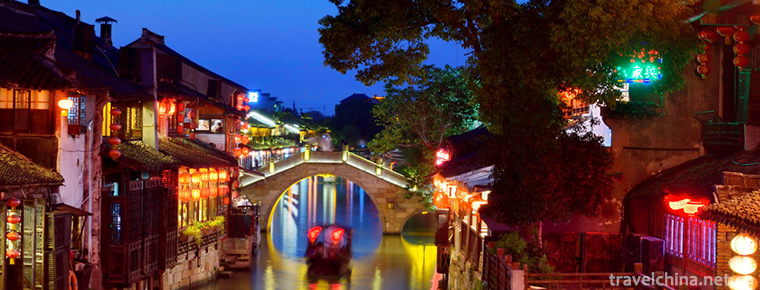
-
Mao tofu Fried bean curd
Mao tofu Fried bean curd is a famous traditional dish in Huizhou, Anhui Province, and is well known for its vegetarian delicacies at home and abroad..
Views: 232 Time 2018-11-27 -
Shanghai Wild Animal Park
Shanghai Wild Animal Park , located at 178 Nanliu Highway, Pudong New Area, Shanghai, is the first National Wildlife Park in China built by the Shanghai Municipal People's Government and the State For.
Views: 164 Time 2018-12-05 -
China Ceramic Museum
The China Ceramic Museum is located in the Cultural Square in the center of Zibo City. On the basis of Zibo Exhibition Hall in April 2001, it was transformed by large-scale investment.
Views: 126 Time 2018-12-22 -
Huizhou three carving
The three carvings in Huizhou are a kind of local traditional carving art. They refer to three kinds of local traditional carving crafts, i.e. wood carving, stone carving and brick carving, .
Views: 143 Time 2019-05-04 -
Lodgeroye and Zaszai
Lodgeroye and Zaszai is a representative long poem of Hani poetry style, which is widely spread in all villages inhabited by Hani Biyo people in Hani Autonomous County of Mojiang. There are ten chapte.
Views: 167 Time 2019-05-15 -
Mongolian Chur
"Chuoer" is an ancient vertical wind instrument of Tuva people of Mongolian nationality in Xinjiang, which mainly distributes in Mongolian inhabited areas of Altay region. The Tuva people of.
Views: 86 Time 2019-06-03 -
Pulangorgozi
Pulangorgozi, also known as "fruit harmony", is a kind of self-entertaining dance, which originates from Pulan County and is widely spread in Ali countryside. It is a kind of hand in hand, s.
Views: 246 Time 2019-06-09 -
Yangjiabu woodcut New Year paintings
Yangjiabu wood engraving New Year's picture is a traditional folk engraving which is spread in Weifang City, Shandong Province. Its production method is simple, exquisite craft, bright color, rich con.
Views: 114 Time 2019-07-11 -
Couplet Custom
Couplet is a couplet inscribed on the pillar of the couplet, also refers to the couplet, is a unique form of literature and art in China. The custom of couplets originated from the dual phenomenon of .
Views: 187 Time 2019-07-14 -
Zong Baonao
The dance used for sacrifice - the Yao Zong Baonao Dance is evolved from an ancient legend. According to Changtang Yao people, from generation to generation, in ancient times, a beautiful Yao mother l.
Views: 335 Time 2019-08-16 -
Zhang Jia Agui
Ah Kui (September 7, 1717 - October 10, 1797). Zhang Jiashi , word Guang Ting , Number Cloud cliffs Manchuria's blue flag people (after the war in Xinjiang were promoted to Zheng Bai Qi), a Bachelor o.
Views: 191 Time 2019-09-11 -
Dazhous secondary industry
In 2019, the added value of all industries in Dazhou is 46.35 billion yuan, an increase of 8.7% over the previous year, of which the added value of industries above Designated Size will increase by 9.6% (see Table 2). Among the industries above .
Views: 305 Time 2020-12-20
